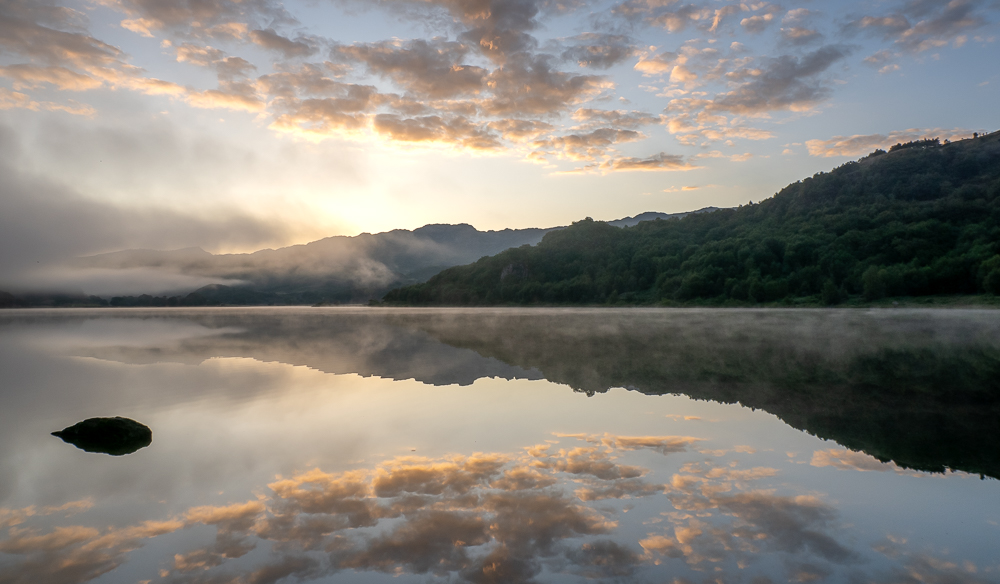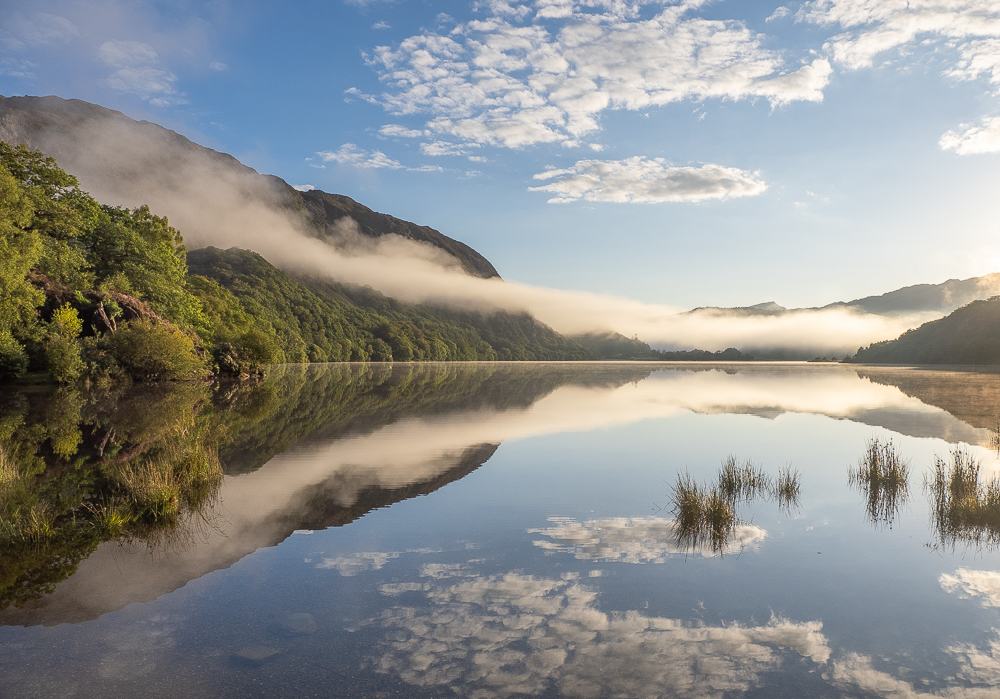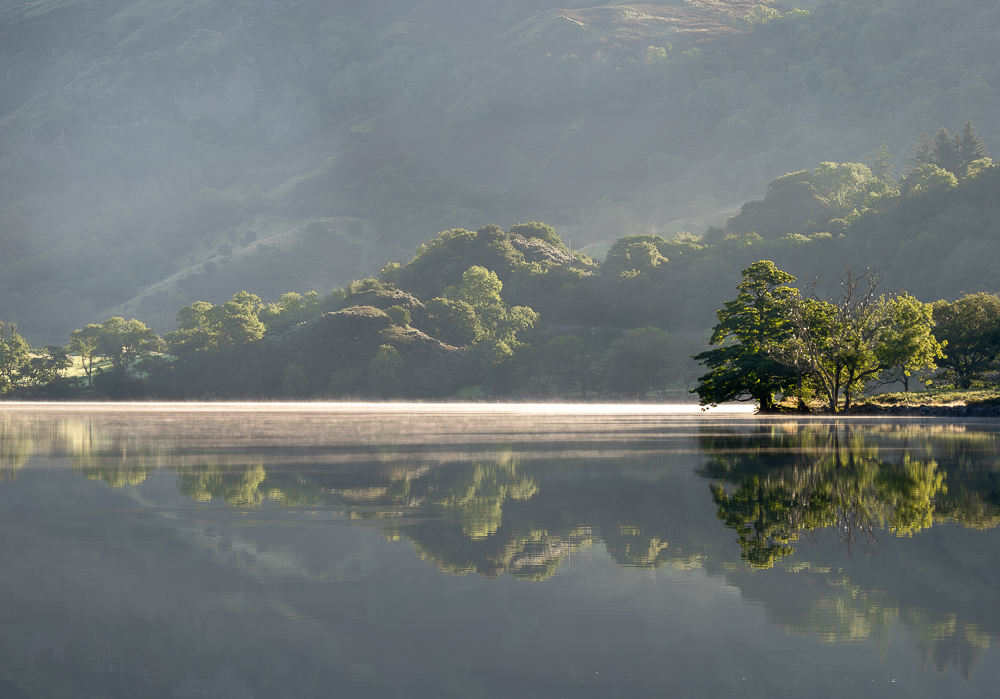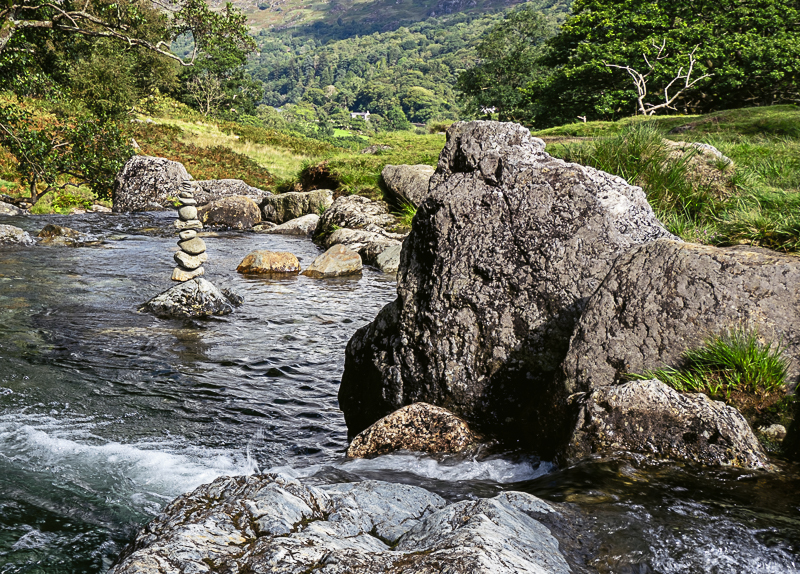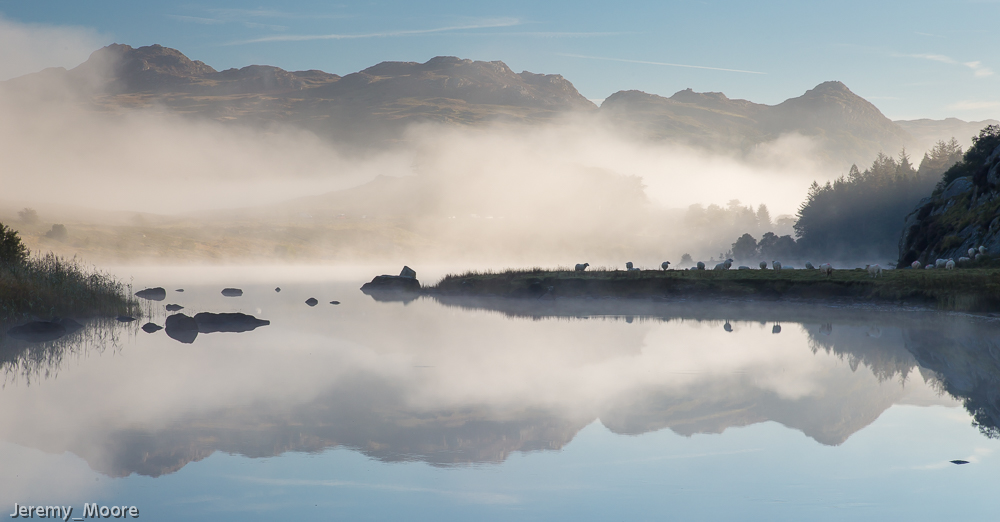The view of Yr Wyddfa (Snowdon) from the Cob, near Porthmadog, is one of the iconic landscapes in Wales. For many years I have been trying to capture it to perfection. I had another attempt last week but I’m still not sure I’ve achieved it. I was in position at the south-eastern end of the Cob long before sunrise and had a long wait before I managed to get a few results I was reasonably happy with.
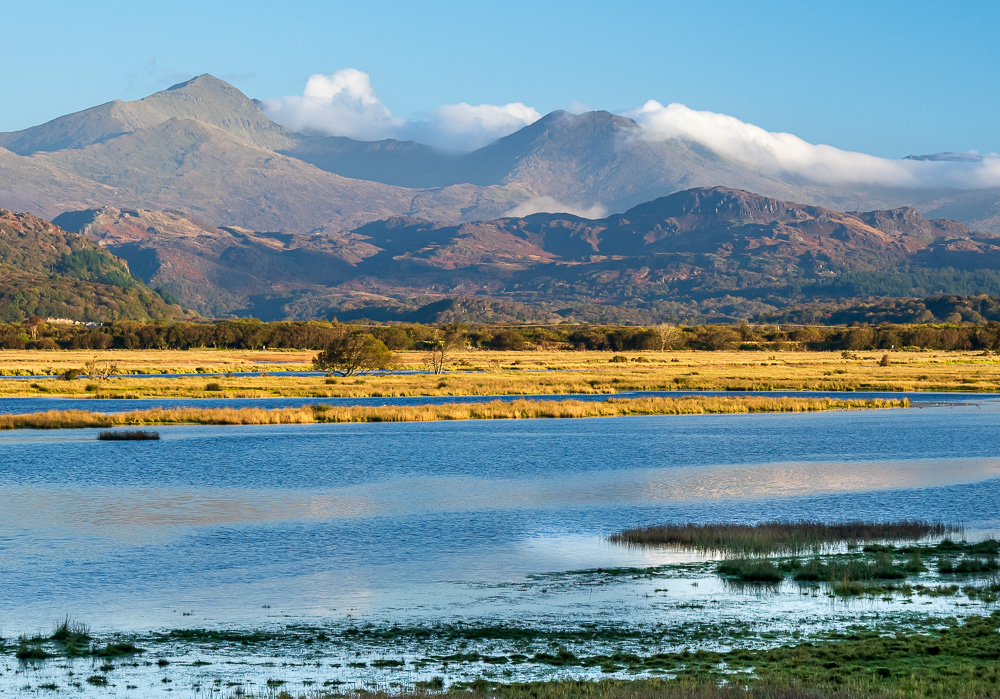
From here one is very close to the Boston Lodge HQ of the Ffestiniog and Welsh Highland Railways. Steam engines are prepared here every morning for service on the lines to Blaenau Ffestiniog and Caernarfon. By now the sun was strong and the activities around the engine sheds were either in deep shadow or strongly backlit. This made some powerful images possible as the trains were put together and then headed off to Porthmadog Harbour station ready to pick up passengers. I love the black-and-white look for steam railways: it reminds me of the last years of steam on British Rail in the 1960’s, when the railway magazines I read were still mostly in b&w.
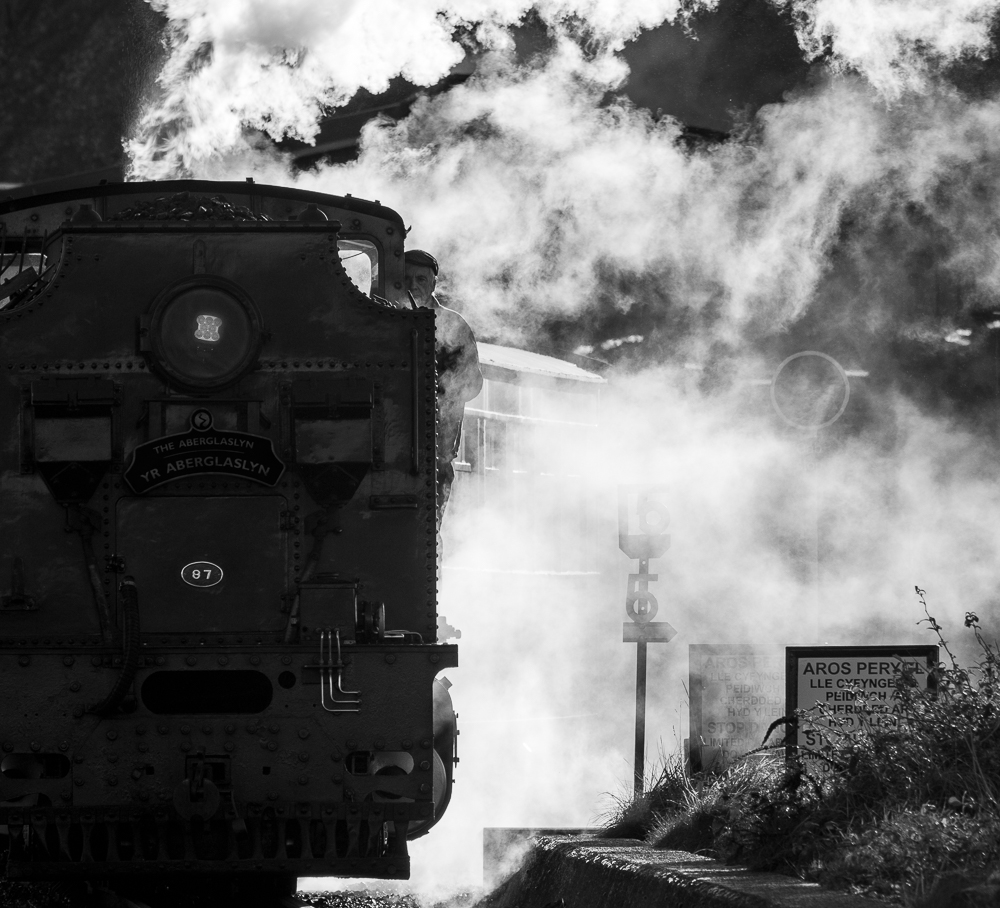
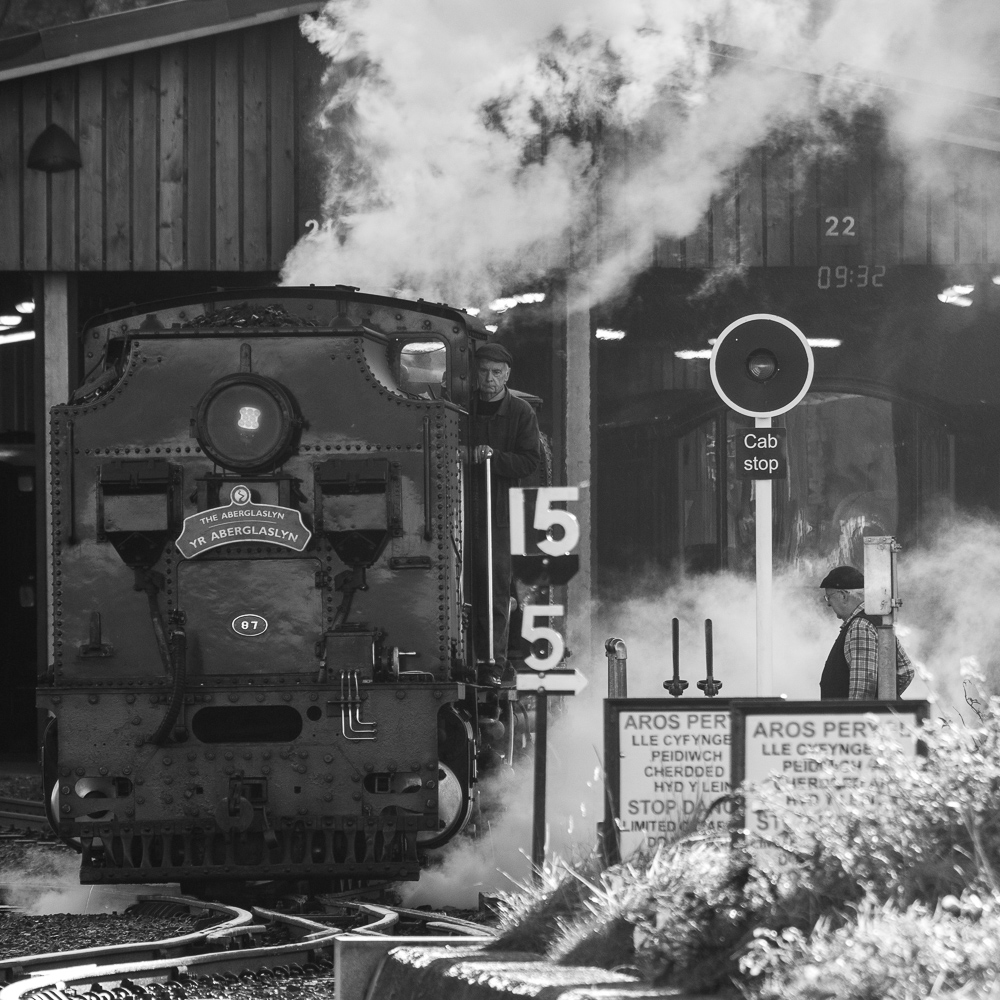
By this time I was in need of a coffee so I headed off to Porthmadog. Take-away in hand I rushed back to the station just in time to catch one of the morning trains heading off towards Tan-y-bwlch. A strong wind blew a plume of steam across the saltmarshes.
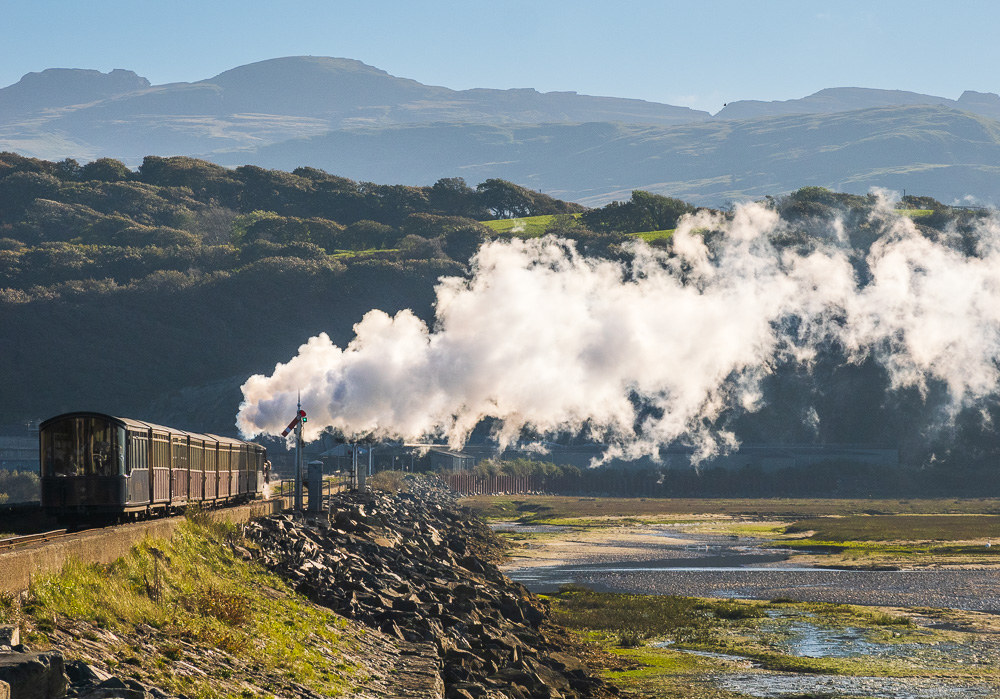
On the nameplate of one of the engines was engraved “Built in 1879”. I told the driver how amazing it was that a machine built almost 150 years ago could still be in operation. He rather burst my bubble by saying that the name plate was probably the only part remaining from the original locomotive. The whole thing has – in effect – been rebuilt around it. The motto of the Ffestiniog could be “re-use, rebuild and recycle”.
I have already written (here) that Llyn Dinas is one of my favourite photo locations in the whole of Wales. On this by now wonderful day for the landscape photographer how could I resist the temptation to drive the ten miles to the lake and see what conditions were like there? I couldn’t and I wasn’t disappointed.
The lake was perfectly still with mirror-like reflections. Birch trees on the far side of the lake had lost some of their leaves, revealing purple twigs and silver trunks and branches. The remaining leaves were in a range of yellows and greens. Between the trees lay dark shadows. It was such a simple photograph to take, but it works so well. The tiny gate on the right-hand side (and its reflection) seem critical to the composition, and the whole thing has a hypnotic, mandala-like effect on me. I could disappear into it.
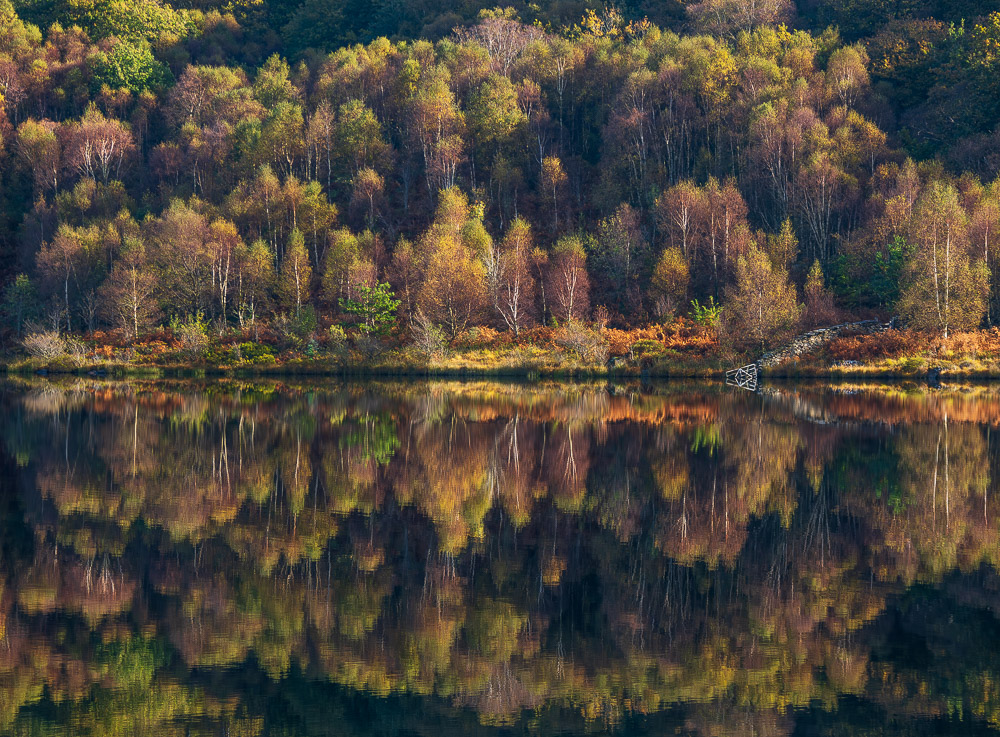
On such a day it seemed like there was a picture around every corner. But a bank of high cloud was relentlessly moving in from the west and by mid-afternoon it had more or less clouded over completely. Anticipating this I had moved on to the well-wooded Capel Curig area where there are also a number of waterfalls. This kind of subject matter is at its best under light cloud and I found what I was looking for in the village alongside the main A5. These falls are not publicly accessible but a quick hop over a wall gives access to them. Unlike the previous picture this needed very precise attention to detail.
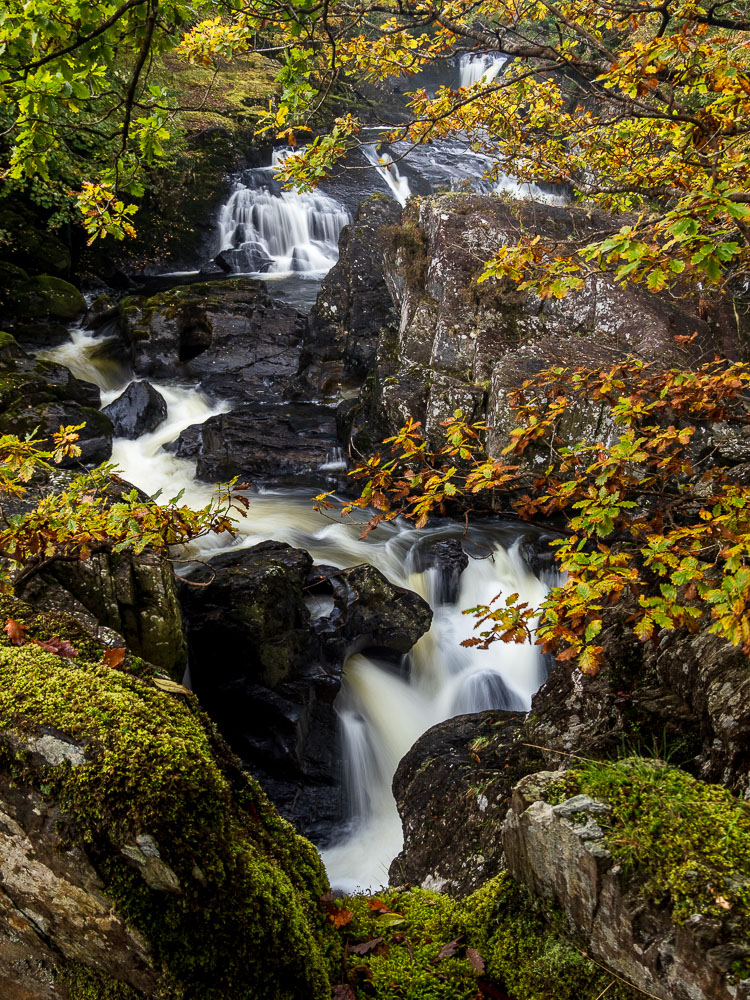
It would be nice to be able to recount how I then retraced my steps back to Llyn Mymbyr where a stunning sunset over Yr Wyddfa awaited me. That would indeed have been the end of a perfect day but it was just too much to ask.
To read more Tales from Wild Wales as they are published please click the Follow button.
